For trekkers and nature enthusiasts, spring is likely the best time to visit the American Midwest. Temperatures are in a comfortable range, national parks aren’t yet overrun with crowds, prices haven’t reached the peak of the summer tourist season, and you’ll typically have no trouble getting settled and parked. Then, you can embark on one of the beautiful treks to admire nature in bloom, still untouched by the heat.
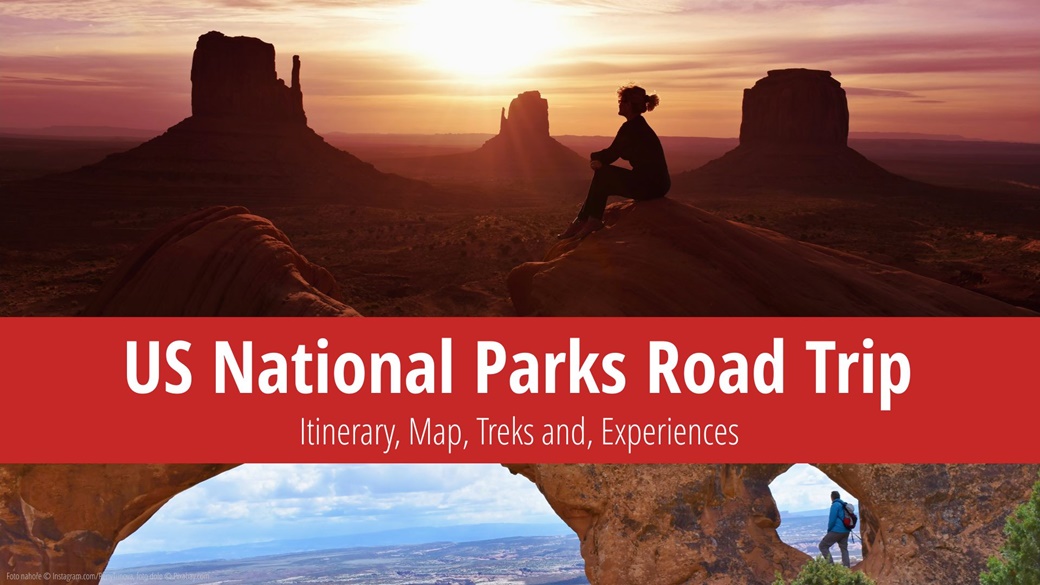
Like everything else, visiting in the spring off-season (in our case, April to May) can have some drawbacks. For instance, some mountain roads and passes may still be closed due to lingering snow at higher elevations, while elsewhere there may be renovations and preparations for the summer high season. Unexpected detours and closures may catch you off guard, as may nighttime temperatures below freezing at higher elevations.
Table of Contents
- National Parks in the USA and Their Tourism Infrastructure
- Road Trip through the Midwest USA
- Mojave Desert
- Grand Canyon – South Rim
- Monument Valley
- Arches National Park
- Bryce Canyon
- Zion National Park
- Death Valley National Park
- Ancient Bristlecone Pine Forest
- Yosemite Valley National Park
- Sequoia National Park
- A Few Observations and Interesting Facts to Conclude
National Parks in the USA and Their Tourism Infrastructure
Americans value and protect their natural environment, but they also ensure visitors can fully enjoy the beauty of nature. This is made possible by the exceptional and functioning tourist infrastructure in all national parks, as well as state parks, reserves, etc.
Most parks (with exceptions such as Mojave or Death Valley) require a valid entrance ticket. This ticket, or the widely used and recommended Annual Pass, can be purchased at the ticket office upon entering the park. The ticket office typically has a barrier on the road, sometimes many kilometers from the center of the park.
Along with the pass, you will receive complimentary park maps and tourist brochures with all the necessary information.
The park infrastructure includes networks of hiking trails, visitor centers, museums, parking lots, campsites, accommodation facilities, toilets, showers, laundries, shops, shuttle bus networks, and any other tourist services you can think of. There are drinking fountains and taps with free drinking water.
Everything is perfectly and clearly labeled, organized for everyone to understand. Park staff and rangers are available to help if needed.
Road Trip through the Midwest USA
Our road trip by RV in late April/May lasted 24 days and covered 3,790 mi on the following itinerary: Los Angeles – Mojave Desert – Grand Canyon – Lake Powell – Monument Valley – Arches – Dead Horse Point – Capitol Reef – Staircase Escalante – Bryce Canyon – Zion Canyon – Las Vegas – Hoover Dam – Death Valley – Ancient Bristlecone Pine Forest – Yosemite – Kings Canyon – Sequoia – San Francisco – Los Angeles.
On the aforementioned road trip, we saw and visited many tourist sites and attractions. I’m focusing on the destinations I consider to be the highlights, with more detailed descriptions of the treks we personally undertook.
-
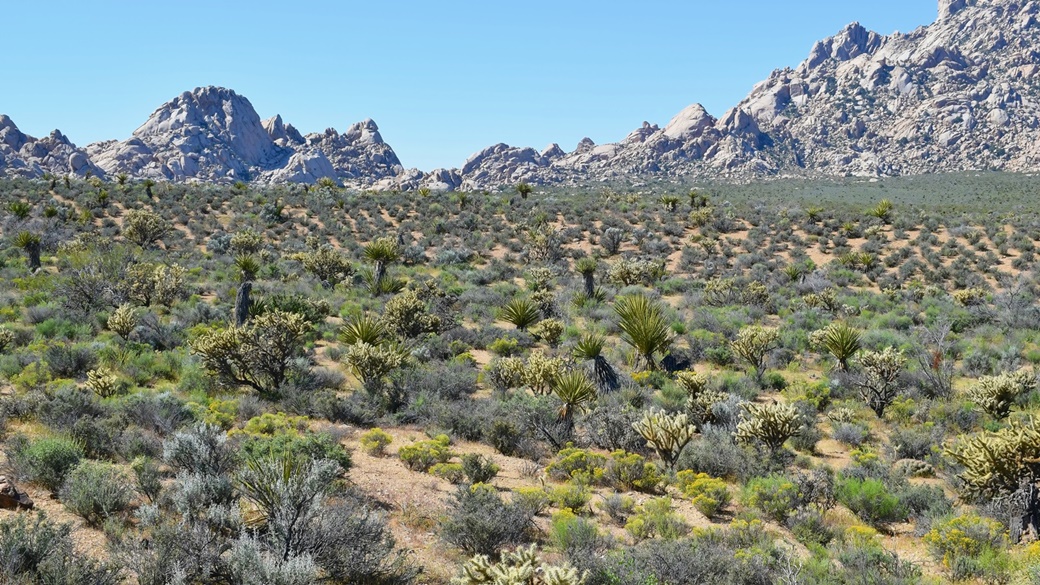
Mojave Desert
The drive from Los Angeles to the Mojave Desert takes about 5 hours.
The Mojave Desert is vast, uninhabited, deserted, and there is no entrance fee.
It may surprise some that I would describe it as a beautiful botanical garden in bloom. In spring, it truly is. Cacti of all kinds and shapes bloom with vibrant flowers, the yellow bushes of desert roses scent the air from a distance, and the variety and abundance of the ubiquitous desert flowers blooming at this time of year is overwhelming. All this is accompanied by the songs of birds, chipmunks, hares, numerous insects, lizards, etc.
You can roam, ride off-road, trek between rocks, canyons, dunes and camp freely almost everywhere, hardly encountering anyone else.
The Kelso Dunes are the largest sand dunes in the Mojave Desert, the highest measuring 200 metres. Kelbaker Road leads to a nearby parking lot, and from there a 3 mi trail leads to their crest. It’s best to start in the morning or evening. This is not only due to the heat during the day, but also because experiencing sunrise or sunset atop the sand dunes is a true delight. The dunes may seem close, but they are really high and walking in the sand can be somewhat challenging. Expect it to take longer to climb to the top than it appears from the parking lot.
The Mojave Desert seems a bit neglected to me. That’s why I want to emphasize how much its beauty and vibrant spring nature surprised us. I would definitely set aside more than 1.5 days for a return visit.
- Available accommodation: Hotels around the Mojave Desert
- Google Maps directions
-
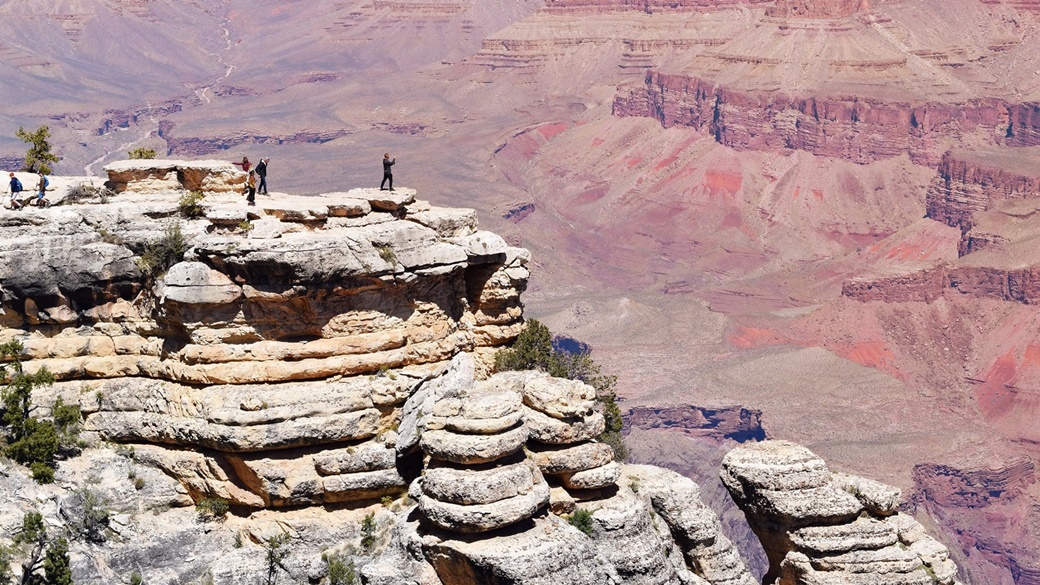
Grand Canyon – South Rim
Describing the awe that washes over you while standing on its rim may be beyond words. The sight can bring tears to your eyes and it’s undeniable that the Grand Canyon is truly unparalleled in the world. This is further accentuated by an impeccable tourist infrastructure and all that accompanies it.
The Rim Trail is the most famous, most visited, and most accessible trail along the South Rim of the canyon, connecting countless breathtaking viewpoints. It is accessible to all, including the less able-bodied, wheelchair users, parents with children, strollers, etc. You can walk it and admire the Grand Canyon all day long.
I recommend using the shuttle bus network (free with your national park admission), which has three loops connecting more remote sites and overlooks. Here, you’ll see the Grand Canyon from a different perspective. You can get on and off at will, the shuttle operates from morning to evening, and everything is efficiently organized by the park staff.
For hiking enthusiasts who, like us, are not satisfied with walking “only” along the rim, there are numerous other renowned trails, several of which lead to the bottom of the canyon.
The South Kaibab Trail is reputed to be the most beautiful. The trail from the top to the bottom of the canyon is about 7 mi long, but you have to climb 4,921 ft! It’s worth noting that attempting this trek in one day (to the bottom and back) is generally not recommended. If you decide to try, descend one day, camp overnight at the bottom (where there are base camps) and climb back up the next day. Ensure you have ample supplies of water, food, and camping gear. The deeper you descend into the canyon, the temperature rises. It can reach 122 °F in the summer, posing a risk of dehydration and overheating. While there are those who can make it there and back in one day, there have been incidents. It’s crucial to respect the Grand Canyon and not overestimate your abilities. The descent is manageable, but the climb back is very challenging.
The South Kaibab Trail is a truly remarkable trek, descending steeply at times and more gently at others. The trail is wide enough for mule caravans. The views and perspectives it offers are different from the canyon rim and change as you descend lower and lower. While there are no snack bars or water supplies, restroom stalls are occasionally available. The trail can be quite busy, especially at the top, even in the off-peak season, as with any other location in the Grand Canyon. Still, it’s definitely worth descending at least part of the canyon for a unique experience.
- Available accommodation: Hotels around the Grand Canyon
- Route on Google Maps
-
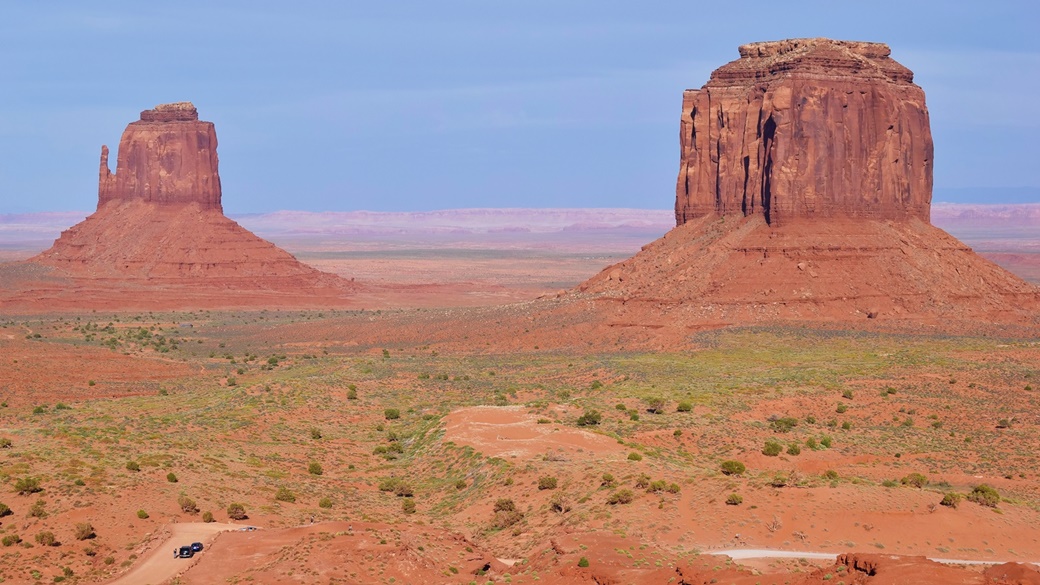
Monument Valley
Just as the Grand Canyon is grand, Monument Valley is monumental.
Monument Valley is located in Utah, within the territory of the Navajo Indian Tribe. This means that, unlike other tourist attractions on Indian reservations (e.g., Antelope Canyon, Havasu Fall, etc.), you can’t use a season pass to enter America’s national parks – Annual Pass America The Beautiful. The Navajo have their own rules, regulations, prices (often quite high), and tickets. Here, the cost per car and crew was $20.00.
Monument Valley is a stunning red desert landscape within the Navajo National Reserve, with towering sandstone rock pillars that reach up to 300m in height. Known from many films, westerns, photo wallpapers, etc., it still surprises in real life, resembling a scene from Mars.
You can drive directly between the majestic rock formations in your own or a rented car. An RV is not permitted on the several dozen kilometers of the scenic circuit on the dirt, unpaved road.
We hiked the 4 mi long Wildcat Trail. The easy trail winds through a beautiful, romantic desert landscape (blooming beautifully in the spring), around several rock blocks. The charm of this place and the trek was enhanced by the fact that we only met three other “hiking” enthusiasts during the entire time. Interestingly, the average American prefers to drive wherever possible. However, we did encounter a beautiful young rattlesnake, which was an incredible experience.
- Possible lodging: Hotels around Monument Valley
- Google Maps directions
-
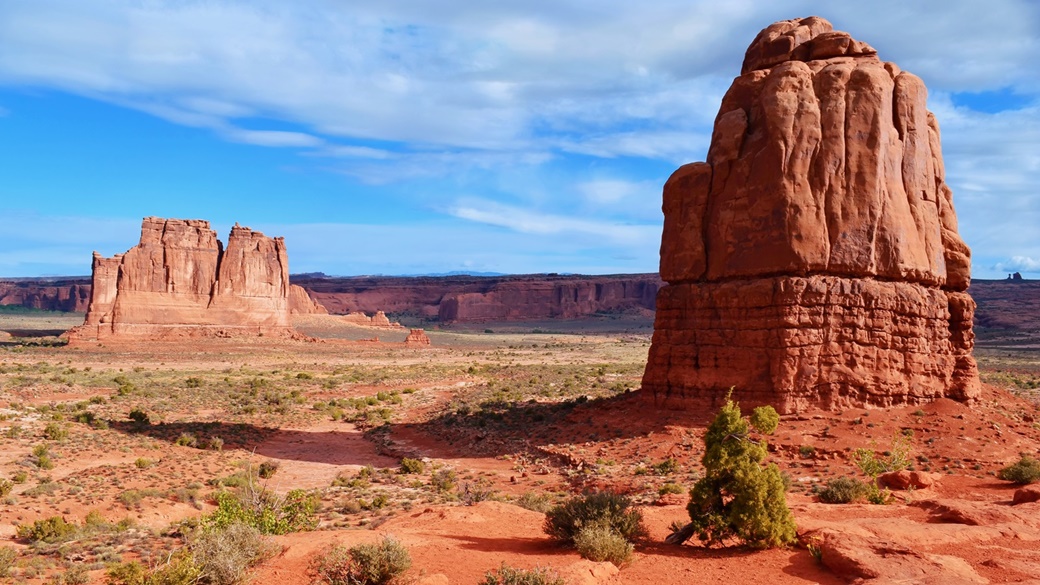
Arches National Park
Although Arches National Park in Utah is not as large as other American parks, it boasts the most rock arches in the world, with over 2,000.
The park is a popular destination for tourists, especially in the nearby town of Moab, which attracts off-roaders and outdoor enthusiasts. From here, it’s a short trip to Canyonlands National Park and Dead Horse Point State Park. The friendly town of Moab offers a variety of accommodations, campgrounds, restaurants, and outdoor activities.
The park’s most famous rock arch is undoubtedly the Delicate Arch. A 3 mi trail of the same name leads directly to the arch. The second, shorter trail to the Upper Delicate Arch Viewpoint was somewhat disappointing as it offers a view of the Delicate Arch from such a distance that the effort to walk there hardly seems worth it.
The trail extends to the far side of the park, where the campground is located. Here, we were most excited about the Devils Garden Trail. This hike provides many opportunities to admire the numerous rock arches and formations, including the notable Landscape Arch. From there, the trail becomes more challenging, but the views of the red rock formations and the surrounding landscape become even more spectacular. And, as usual, the longer and further you go, the fewer people you meet.
- Available accommodation: Hotels around Arches Park
- Google Maps directions
-
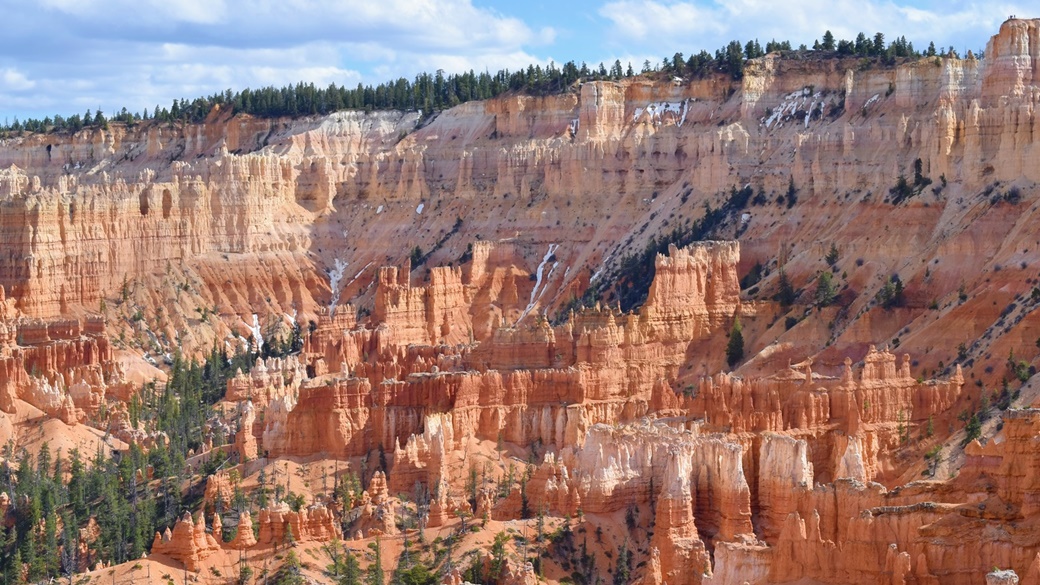
Bryce Canyon
Bryce Canyon is not particularly extensive and is situated at an elevation of about 8,530 ft. Even in May, remnants of snow could still be found in certain places, and in the early morning, under a clear sunny sky, we were surprised by a temperature of 19 °F.
Regardless, it’s well worth a visit. It was one of the most photogenic landscapes we encountered on our trip.
The canyon is chock-full of red and white limestone rock towers and spires, called hoodoos, that are characteristic of the area. This striking and unusual landscape can be viewed from the Rim Trail at its upper edge, akin to the Grand Canyon. Here, too, a free shuttle bus connects the various viewpoints.
It would be a loss to not indulge in a closer view from one of the trails leading directly between the towers into the canyon. We set off early in the morning on the Navajo Loop Trail (the term “loop” indeed reflects the trail’s form in certain spots). Other trails such as the Queens Garden Trail and the Peekaboo Loop follow. Regardless of the path you choose, none are overly strenuous and they all offer spectacular views and scenery. We found ourselves alone in the canyon in the morning, but as the day progresses, the trails attract more hikers.
- Available accommodation: Hotels around Bryce Canyon
- Route on Google Maps
-
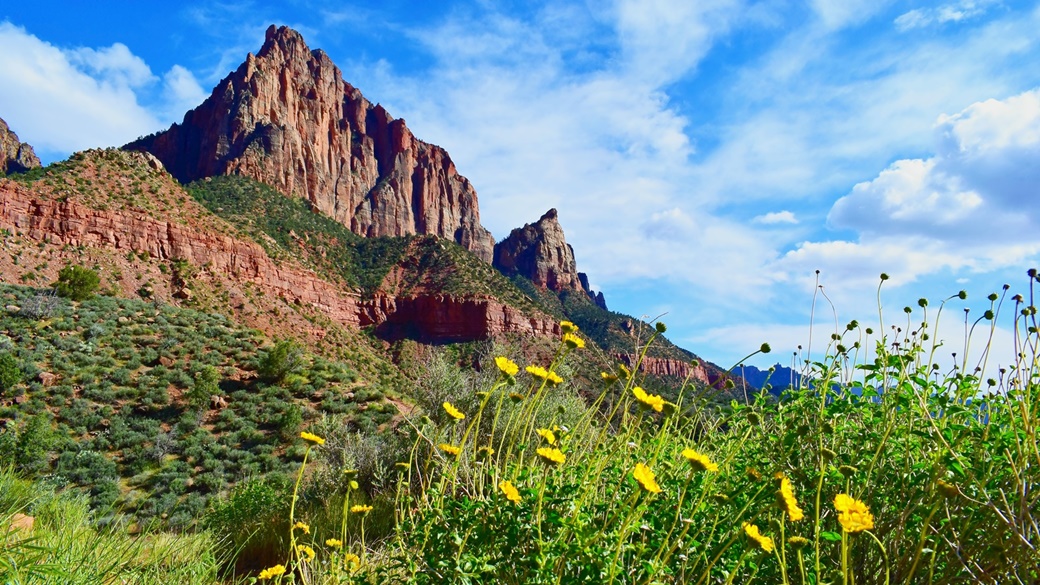
Zion National Park
Zion is distinctive in that, unlike other parks where you are at the top of the canyon looking down (as in Bryce or the Grand Canyon), the toll access road here takes you to the canyon’s bottom. At this point, you will need to leave your car in the designated parking area.
The scenic road through the canyon is only accessible by free, eco-friendly shuttle buses for the remainder of the journey. These buses stop at several points along the way, offering various opportunities for treks.
These range from easier treks along the hillside or canyon floor, to more adventurous ones through the river and water (the Narrows Trail), and even up to the famous Angels Landing Trail (2 mi). The latter permits the most intrepid visitors a top-down view into the canyon.
The bravest visitors take on this extreme hike, which leads from the bottom of the canyon to the edge of a cliff about 1,476 ft high. The trail follows rock ledges and must be navigated along narrows and ridges using safety chains. Given the several fatal accidents that have occurred, there is ongoing debate regarding its suitability for the general public. We strongly advise anyone considering this hike to review photos or videos online. While this trek is not for everyone, especially children, it does attract a large number of tourists. Of course, if you do not suffer from vertigo (like myself) and undertake it, you will be rewarded with a stunning and unique view of the entire Zion Park valley.
- Available accommodation: Hotels around Zion Park
- Google Maps directions
-
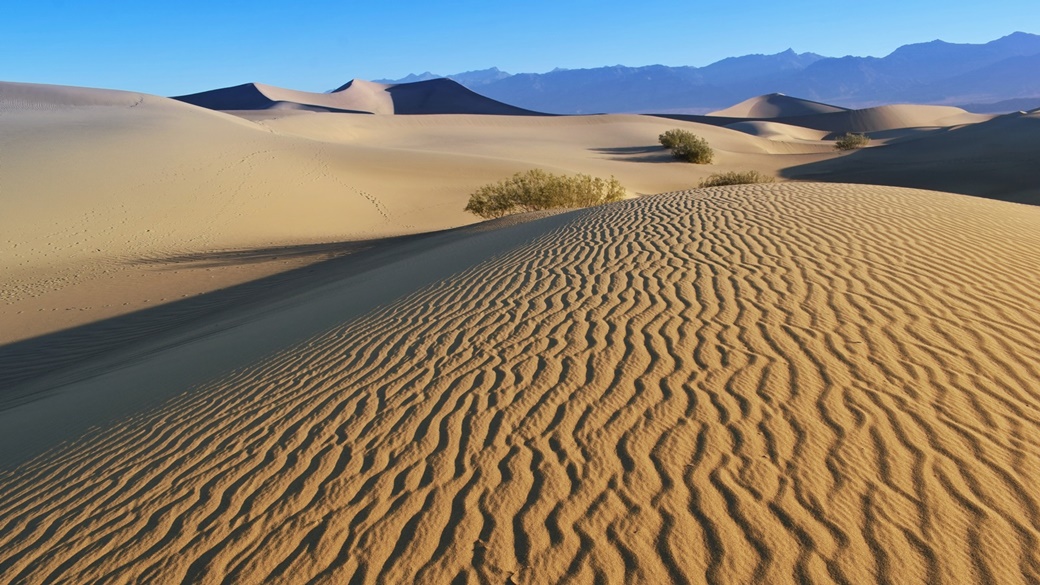
Death Valley National Park
The driest, hottest, and lowest point in the USA is Death Valley.
This expansive, desolate, and inhospitable arid desert landscape offers much to see. The endless roads crossing the valley and salt pans are fascinating in their own right.
Make a stop at Zabriskie Point for captivating views of the surrounding rock formations and landscape, especially in the morning and evening light. The Badwater Basin is a barren salt pan situated 282 ft below sea level. The highest recorded temperature here during summer was 134 °F.
Unlike other American deserts, Death Valley is not covered with sand, but with gravel and rocks. However, a few sand dunes can be found in certain spots.
We set out before sunrise to visit the most famous of these, the Mesquite Flat Dunes off Highway 190. Dunes can be quite deceptive, and we were surprised at how far we had traveled from the parking lot during our barefoot trek, all the while admiring and capturing photos of the scene.
Witnessing the sunrise from atop the dunes, the play of light and shadow on the wind-rippled sand, and the tracks of desert wildlife was undoubtedly one of the most profound experiences of Death Valley.
- Available accommodation: Hotels in and around Death Valley
- Google Maps directions
-
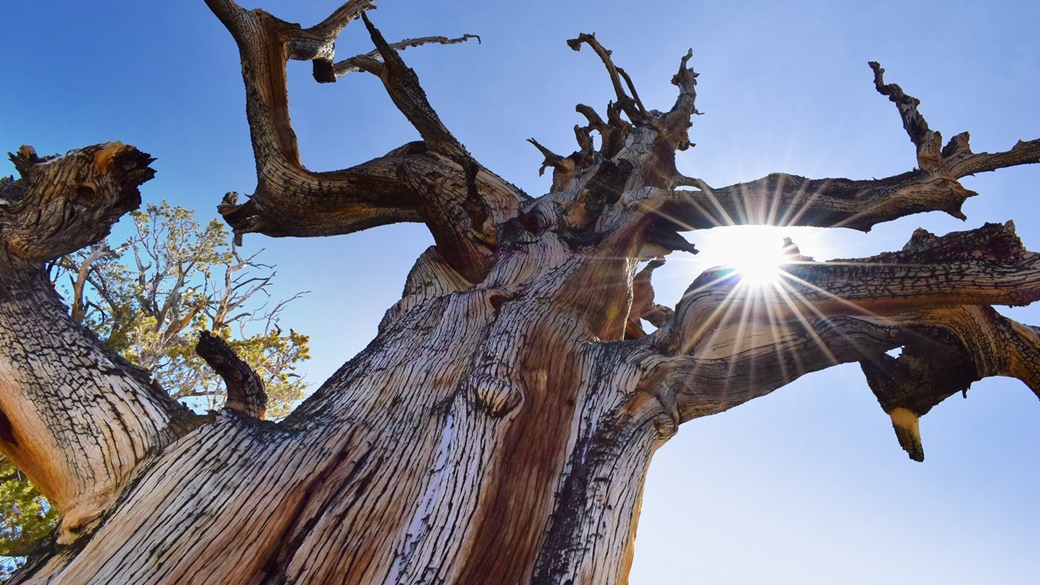
Ancient Bristlecone Pine Forest
Not as widely known or visited, the Ancient Bristlecone Pine Forest sits at an elevation of approximately 9,843 ft, east of the Sierra Nevada mountain range.
This location is special because it is home to the oldest living organisms on the planet – the longleaf pines. The oldest among them, known as Methuselah, is an impressive 4,800 years old.While some trees here are deceased, others remain alive, all resembling grand bonsai trees. Nature lovers should not miss this park. Even the sweeping views of the Sierra Nevada Mountains, including the tallest peak in the U.S. (outside of Alaska) – Mount Whitney at 14,505 ft – are worth the trip.
- Available accommodation: Hotels near Ancient Bristlecone Pine Forest
- Google Maps directions
-

Yosemite Valley National Park
Yosemite Park, with its stunning scenery, waterfalls, and renowned climbing walls like El Capitan and Half Dome, is a paradise for hikers and climbers. It is expansive and could be explored for many days. Its most frequently visited area is Yosemite Valley.
Yosemite is an exceptional park; however, its drawbacks include its close proximity to the California coast with its major cities and its accessibility from large population centers. Even on weekdays in the less crowded spring season, there were numerous tourists, visitors, cars, and preparations for the peak season with repairs and renovations ongoing. A solution similar to Zion National Park would be appreciated, where tourists must park their cars and use the park shuttle buses. It would undoubtedly enhance the ambiance of Yosemite Valley and contribute to the visitors’ overall enjoyment. Frankly, I cannot envision the situation in the peak summer season, and perhaps I do not wish to.
Spring is when Yosemite Falls displays its full potential, thanks to the melting snow on the mountain ridges. The highest two-tiered, 2,425 ft high Yosemite Falls was impossible to photograph, except from a distance, due to the omnipresent mist. I would have risked soaking my camera. In a word – beautiful!
The Mirror Lake Trail is a pleasant 4 mi trek through the valley to the lake, offering views of the Half Dome wall. A lovely trail through the woods and along the river, it is also accessible for the handicapped who can drive their cars.
A short trail through the woods at the other end of the valley leads you to the base of the climbing mecca that is the El Capitan Wall. The wall is nearly perpendicular, 2,953 ft high, and climbers appear like ants from afar. The sight of it causes the back of your neck to ache, and it is impossible to capture fully in a camera’s viewfinder. Kudos to Adam Ondra from the Czech Republic, who climbed its most challenging route in a record eight days!
The most breathtaking and famous view of Yosemite Valley is from the Tunnel View, located at the tunnel on Access Road No. 41. There is a parking lot and an observation deck with dozens of photographers lined up. The view from here is stunningly beautiful in any season.
- Available accommodations: Hotels in Yosemite Valley
- Google Maps directions
-
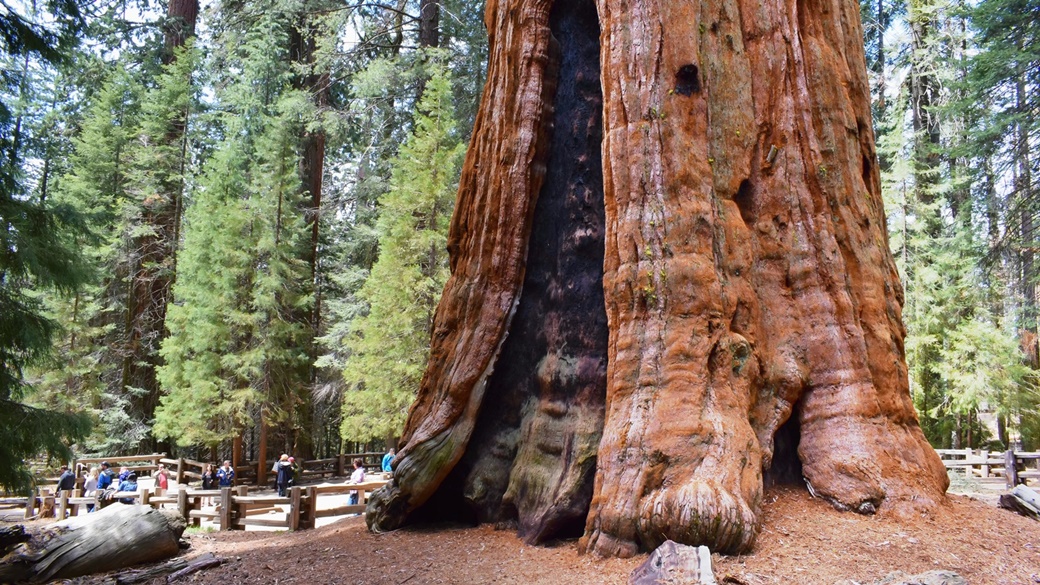
Sequoia National Park
We’ve all heard of these towering trees, but witnessing them firsthand is truly awe-inspiring.
These behemoths reach heights of up to 328 ft, are nearly 3,000 years old, and are so voluminous that you could comfortably dwell within their cavities. To wrap your arms around the largest of them, you’d need to gather 20 friends, join hands, and form a circle. Sequoias are truly giants.
Sequoias can only be found on the ridges of the Sierra Nevada mountains in Kings Canyon and Sequoia National Parks. These two parks are close in proximity, and most of the popular trails and hikes through the Giant Forest are neither strenuous nor lengthy. The world’s largest tree, General Sherman, is located in Sequoia Park, and the short Big Tree Trail offers a lovely loop around a mountain meadow lined with towering redwoods.
The second largest tree, named General Grant, is found in Kings Canyon. A road passes through both parks and, as is typical in the USA, the significant landmarks are well-marked for easy navigation.
- Available accommodation: Hotels around Sequoia Park
- Google Maps directions
- Most USA parks do not sell drinks in PET bottles for conservation reasons.
- The Annual Pass card cannot be used at parks on Indian Territory.
- In Death Valley, gas costs approximately $4.00 more per gallon than elsewhere.
- Walmart, McDonald’s, and other chain stores are absent in Utah, particularly in Indian Territory, outside of large cities.
- It’s challenging to find alcohol in rural Utah. If available, it’s in a secluded Liquor Shop behind a thick barrier. The price of a bottle of table wine was so high that we suppressed our cravings. Bars do exist, but regular shops don’t sell alcohol. A large market informed me they don’t carry alcohol. Beer at most, but usually some fruit beer.
- In Las Vegas, Nevada, you’ll compensate for it; alcohol and inebriated individuals are present at every corner.
- The highway to the Bodie ghost town is not maintained in winter. There was still snow in May, so it was closed.
- Due to the same reason, crossings over the Sierra Nevada Mountains, including the renowned Tioga Pass, were closed in the spring. Our initially planned short trip from Death Valley to Yosemite became a day-long detour of 249 mi!
A Few Observations and Interesting Facts to Conclude
The author of this article is Renata Tunová. Her other spectacular photos from her travels, not only in the USA, can be found on RenataTunova’s Instagram.

 24 Day Road Trip Guide to US National Parks
24 Day Road Trip Guide to US National Parks

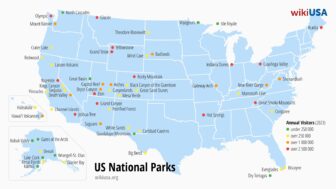



Contribute with Your Question or Personal Experience